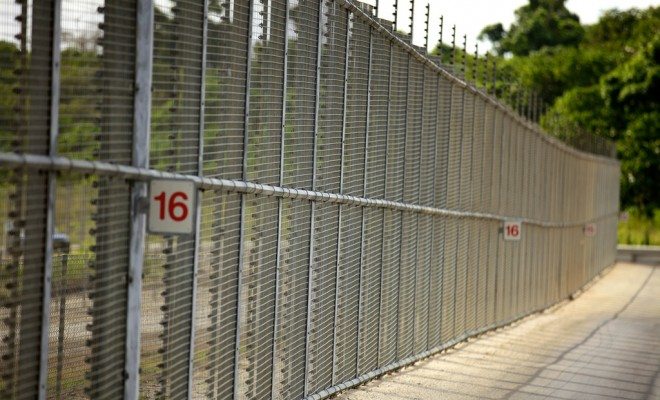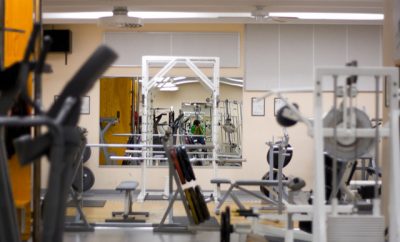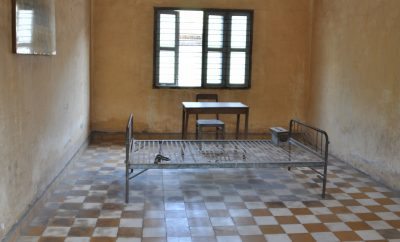 Image courtesy of [DIBP Images via Flickr]
Image courtesy of [DIBP Images via Flickr]
News
Chicago “Black Site” Allegations Yet Another Example of Police Brutality
News of a secret detention facility in Chicago broke this week and it’s sparking horror and outrage across the country.
This “black site,” revealed by the Guardian, is a nightmare image straight out of a post-apocalyptic movie. People are “arrested” and taken to this site, which is inside a warehouse in Chicago’s Homan Square. Then they are subjected to inhumane treatment. They aren’t afforded the rights that the U.S. Constitution promises all of us. For example, lawyers claim they aren’t able to visit their clients at the site, and beatings and other forms of violence occur. In some ways most disturbingly, it’s all off the books. People who are taken to the Homan Square site aren’t entered into the Chicago PD system, or have any records of their detainment. As Anthony Hill, a criminal defense lawyer put it, “They just disappear, until they show up at a district for charging or are just released back out on the street.”
Read more: Chicago Still Dangerous Despite Absence From Crime Rankings
The facility at Homan Square is being dubbed a “black site” as a nod to the CIA detention facilities in the Middle East, although others have called them “shadow sites.”
The Chicago Police Department is, of course, trying to play Public Relations catch up. It’s claiming that nothing untoward has happened at Homan square, providing a statement that included:
CPD [Chicago police department] abides by all laws, rules and guidelines pertaining to any interviews of suspects or witnesses, at Homan Square or any other CPD facility. If lawyers have a client detained at Homan Square, just like any other facility, they are allowed to speak to and visit them. It also houses CPD’s Evidence Recovered Property Section, where the public is able to claim inventoried property…There are always records of anyone who is arrested by CPD, and this is not any different at Homan Square.
These revelations come at an interesting time–the United States has been engaged in a discussion over the power of our police forces for a while now. Reports of increased militarization, racial profiling, and human rights abuses are finally seeing the light of day and mainstream news coverage. From Ferguson, Missouri, to New York, New York, people this Fall stood up in protest against police treatment of Michael Brown, Eric Garner, Tamir Rice, and others. This information out of Chicago seems to be just the latest in a long, terrifying list. It’s horrible, reprehensible, and heartbreaking, but it’s by no means unsurprising.
Reading the Guardian piece, complete with the many, many horrifying examples of what purportedly happens at this detention center, reminded me of a powerful speech by FBI Director James Comey just a few weeks ago. He talked a lot about innate racial biases in law enforcement, particularly in light of those events I mentioned above. Although his speech was by no means faultless, there were many honest truths to which Comey seemingly spoke. At one point, he said:
A mental shortcut becomes almost irresistible and maybe even rational by some lights. The two young black men on one side of the street look like so many others the officer has locked up. Two young white men on the other side of the street — even in the same clothes — do not. The officer does not make the same association about the two white guys, whether that officer is white or black. And that drives different behavior. The officer turns toward one side of the street and not the other. We need to come to grips with the fact that this behavior complicates the relationship between police and the communities they serve.
While there’s no indication exactly what race those interred at Homan Square are–there are certainly claims that many of the people brought there are low-income, and black, Hispanic, or members of other minority populations. It’s sad, in light of Comey’s speech and the events of this summer, how easy this becomes to imagine. Chicago’s police force taking those who lack resources, subjecting them to inhumane treatment, and not worrying about the consequences. It’s easy to silence a voice when that voice is nowhere near a microphone. While it’s yet to be seen what will be borne out of these revelations, I wouldn’t be surprised if more “black sites” exist in other cities. There’s a big problem here–and this is just one more piece of the puzzle.








Comments